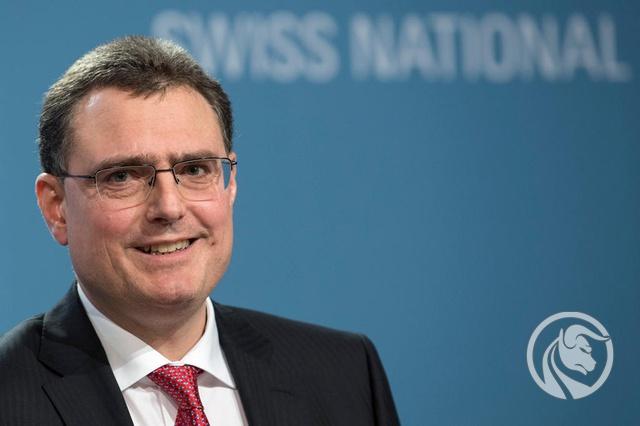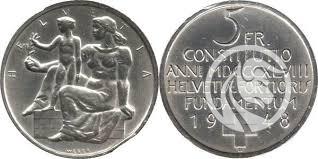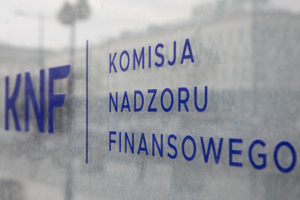Swiss National Bank - functions and mission of the SNB
Switzerland is one of the most developed economies in the world. The Swiss franc, on the other hand, has been a safe haven for many decades. Despite the fact that the franc, unlike the euro or the dollar, is not a "top-tier currency", it is one of the most important currencies in the world (top ten). However, the trading volume of this currency is smaller than that of the yen, British pound or Australian dollar. The value of the franc is a product of the strength of the economy, government policy and the policy of the central bank. It was this last factor that had a great influence on the Swiss franc exchange rate over the last decade. In this article we will present the history of the Swiss Central Bank (with English Swiss National Bank - SNB).
Central banking in Switzerland
In the XNUMXth century, there was no single currency issuer in Switzerland. At that time, the country's issuers were several cantonal banks and private banks. With ever greater integration between the European and world economies, Switzerland's financial system seemed increasingly dated. There was no lender of last resort. Many of the leading European economies have had national central banks (Bank of England, Bank of France, Bank of Austria or German Reichsbank). Problems with an adequate supply of money in the cantons of Switzerland became difficult to solve. Reforms were needed. In 1906 it was passed "Federal Act on the Swiss National Bank". A Swiss central bank was established and it started operating in June 1907. SNB stabilized the financial market in Switzerland and raised the importance of this market in Europe. In the first half of the XNUMXth century, Switzerland was the gold distribution center. When almost all of Europe was at war, Switzerland was trading with both sides of the conflict.
For many years, the Swiss Franc has been based on the goldfor this reason, the role of the SNB was to regulate the circulation of money and to ensure that the franc could be exchanged for gold (on demand). Interestingly, until 1967, currencies from 0,5 to 5 tailcoats were pressed from silver. However, in the second half of the XNUMXs, due to the increase in the prices of raw materials, their value was higher than the face value on the coin. As a result, there were cases of francs being taken abroad for the purpose of melting them down. In order to stop this practice, francs made of cupronickel were minted.
It is worth mentioning that Switzerland has one of the largest gold reserves in the world. In 2020, the SNB owned 1040 tons of gold. For comparison National Bank of Poland has about 230 tons of gold. The Swiss bank also owns shares of American companies, the value of which in 2021 exceeded 150 billion dollars. At the end of the first quarter of 2021, the bank had less than 2500 public companies. The foreign currency reserves of the Swiss Central Bank exceed 900 billion Swiss francs.
The stiffening of the franc exchange rate and the capitulation of the SNB
The Swiss Central Bank is best known for the decision it made in 2011. During the crisis in the Euro Zone (the famous PIIGS countries, i.e. Portugal, Greece, Italy, Ireland, Spain) there was a capital flight to Switzerland. This significantly strengthened the Swiss franc. This hurt Swiss exporters. Then the SNB (Swiss National Bank) became the main protagonist. The central bank introduced a very rare solution - it created the so-called floor. The decision of September 6, 2011 resulted in the fact that the exchange rate of the euro against the Swiss franc was fixed at 1,20. It was not the first such decision in the history of the SNB. In 1978, the rate of the Swiss franc was linked to the rate of the West German mark. The currency intervention prevented the strengthening of the franc. He was the "cost" of the strategy a significant increase in the balance sheet total of the central bank. Despite the SNB's guarantee, the franc was unable to weaken. The decision to introduce a negative interest rate on bank deposits (18.12.2014/XNUMX/XNUMX) did not help either. The central bank was unable to win against the market.
An excerpt from the conference on January 15, 2015
On January 15, 2015 the so-called Francogeddon. The SNB announced that it was no longer defending the 1,2 to euro rate. As a result of the market panic, cancer strengthened by 30%. At the end of the day, the franc appreciated against the euro by 23% a against the dollar by 21%. Following the strengthening of the franc, the exchange rates of leading Swiss exporters, for example, The Swatch Group, fell by 15%. The decline in Swiss equities was due to the market discounting the likelihood of a decline in revenues. The strengthening of the franc also caused perturbations in the forex market, as many clients had negative balances due to the use of too much leverage. The FXCM broker reported that its clients lost $ 225 million on that day. Simultaneously many brokers have reported significant losses (incl. Saxo Bank, Global Brokers NZ, Aplari, FXCM). The strengthening of the franc also had an impact on the household budgets of many households in Poland. This was due to the fact that the installments of many mortgage loans were dependent on the exchange rate of the Swiss franc.
Be sure to read: Could you make a profit from the Frank massacre?
Swiss National Bank shareholders
The Swiss Central Bank is a joint stock company with cantons, cantonal banks and private shareholders as shareholders. SNB's capital is divided into 100 shares with a par value of 000 Swiss francs. Schweizerische Nationalbank shares are listed on the Swiss stock exchange. According to the annual report for 2020, the shareholding structure is dominated by 26 cantons and 23 cantonal banks, which represent 76,1% of votes and 50% of shares in the SNB's capital. In 2020, the dominant shareholders managed to buy 267 SNB shares. It is also worth mentioning that from 1921 the dividend amount was fixed at 15 francs per share. For this reason, the company's shares are not on the radar of financial institutions.
The largest shareholders of the central fuel tank are:
- Canton of Berne holding 6 shares (630% share in the capital),
- Canton of Zurich holding 5200 shares (5,20%),
- Theo Siegert, with 5039 shares (5,04%)
- Canton of Vaud, which holds 3401 shares (3,40%).

Theo Siegert
He is a very interesting shareholder Theo Siegert, who is the largest private shareholder of the company. Interestingly, he is not Swiss, but German. Despite owning over 5% of the central bank's shares, its voting share is only 0,14%. It is worth mentioning that in 2009 it was the largest shareholder of SNB. Interestingly, Siegert is not a very famous person in Germany. Theo Siegert manages the Haen-Carstanjen & Söhne family business, which now operates as a family office that deals with investment management.
SNB goals
The main goal of Swiss National Bank is to ensure price stability. The central bank tries not to cause too much inflation or deflation (fall) in the economy. The SNB's inflation target is 2%. In addition to price stability (the main goal of the bank), another goal is to support economic growth in Switzerland.
Keeping an eye on the inflation target sometimes requires the SNB to change interest rates. Their increase is aimed at reducing the inflation rate, which indirectly supports the "strength" of the franc. In the event of a drop in interest rates, the SNB tries to "weaken" the franc and stimulate the Swiss economy. The SNB also has the task of ensuring the stability of the financial sector incl. by using open market operations (e.g. repo or reverse repo transactions) and introducing market regulations.
A side function of the SNB is also the coordination of monetary policy with international institutions (in agreement with the federal government). Another function is statistical activity. Through it, the SNB collects, aggregates and publishes information about the Swiss financial market.
Bank authorities
As a joint stock company, SNB organizes the Annual General Meeting of Shareholders every year, which is usually held in April. A very important organ of the Swiss Central Bank is the Bank Council, which consists of 11 members. Six members (including the President and Vice President) are elected by the Federal Council. In turn, the remaining members are elected at the general meeting. The Bank's Council is responsible for controlling the activities of the SNB. In 2020, the Baku Council met 8 times (in January, February, April, June, September, October and December).
Another body is the Management Board of the Bank, which is responsible for determining the monetary policy, asset management strategy and caring for the financial stability of the Swiss market.. Currently, the bank's management board consists of three people:
- President - Thomas Jordan,
- Vice President - Fritz Zurbrugg,
- Board member - Andrea M. Maecler.

Thomas Jordan source: snbchf.com
Thomas Jordan He is a Swiss economist who graduated in Economics from the University of Bern in 1989. Four years later, he defended his doctorate. After his doctorate, he worked for several years as a researcher at Harvard University. In 1998 he returned to the University of Bern as a lecturer. He started his career in SNB in 1997 as an economic advisor. From 2004, he was a member of the bank's management board. In 2012, he replaced Philippe Hildebrand in the role of the chairman of the SNB.
Summation
The SNB's task is to monitor the inflation target and take care of the growth of the Swiss economy. The Swiss Franc is one of the main safe havens in the financial market. For this reason, capital flows to Switzerland very often during market perturbations. This strengthens the CHF, harming Swiss exporters. For this reason, the SNB for many years was very active in trying to weaken the currency, which resulted in the famous Euro floor, which operated between 2011 and 2015. Increasing reserves mean that SNB also invests in the stock market (it owns shares in over 2500 companies).






















![Forex Club – Tax 9 – Settle tax on a foreign broker [Download the Application] Forex Club - Tax 9](https://forexclub.pl/wp-content/uploads/2024/02/Forex-Club-Podatek-9-184x120.jpg?v=1709046278)
![Trading View platform – solutions tailored to the needs of traders [Review] trading view review](https://forexclub.pl/wp-content/uploads/2024/03/trading-view-recenzja-184x120.jpg?v=1709558918)
![How to connect your FP Markets account to the Trading View platform [Guide] fp markets trading view](https://forexclub.pl/wp-content/uploads/2024/02/fp-markets-trading-view-184x120.jpg?v=1708677291)
![How to invest in ChatGPT and AI? Stocks and ETFs [Guide] how to invest in chatgpt and artificial intelligence](https://forexclub.pl/wp-content/uploads/2023/02/jak-inwestowac-w-chatgpt-i-sztuczna-inteligencje-184x120.jpg?v=1676364263)


![WeWork – the anatomy of the collapse of a company valued at $47 billion [WeWork, part II] wework bankruptcy story](https://forexclub.pl/wp-content/uploads/2024/04/wework-bankructwo-historia-184x120.jpg?v=1711729561)
![Adam Neumann – the man who screwed up Softbank [WeWork, part AND] adam neumann wework](https://forexclub.pl/wp-content/uploads/2024/04/adam-neumann-wework-184x120.jpg?v=1711728724)





![How to transfer shares to another brokerage office [Procedure description] how to transfer shares to another brokerage house](https://forexclub.pl/wp-content/uploads/2024/03/jak-przeniesc-akcje-do-innego-biura-maklerskiego-184x120.jpg?v=1709556924)

![The most common mistakes of a beginner trader - Mr Yogi [VIDEO] Scalping - The most common mistakes of a beginner trader - VIDEO](https://forexclub.pl/wp-content/uploads/2024/03/Scalping-Najczestsze-bledy-poczatkujacego-tradera-VIDEO-184x120.jpg?v=1711601376)
![Learning patience: No position is also a position - Mr Yogi [VIDEO] Scalping - Learning patience - No position is also a position - VIDEO](https://forexclub.pl/wp-content/uploads/2024/03/Scalping-Nauka-cierpliwosci-Brak-pozycji-to-tez-pozycja-VIDEO-184x120.jpg?v=1710999249)
![When to exit a position and how to minimize losses - Mr Yogi [VIDEO] Scalping - When to exit a position and how to minimize losses - VIDEO](https://forexclub.pl/wp-content/uploads/2024/03/Scalping-Kiedy-wyjsc-z-pozycji-i-jak-minimalizowac-straty-VIDEO-184x120.jpg?v=1710336731)



















Leave a Response